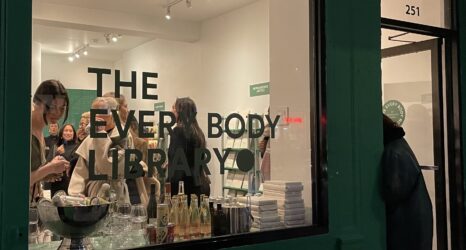Recently, there have been a few high-profile examples of magazines publishing images of “real” women: plus-sized models, or celebrities free of makeup and/or Photoshop. The ensuing publicity can make it feel that we’ve won body image victories–but let’s look closer at these images to find out how much we should really be celebrating.
February 2009: Love Magazine’s first magazine cover features a nude Beth Ditto.
April 2009: French Elle’s no make-up edition features eight European models without make-up or digital touch ups.
September 2009: Glamour Magazine features “the woman on p.194” with a belly roll (and a smile).
January 2010: V Magazine’s plus-size model spread, clothed and nude.
February 2010: Australian Marie Claire puts Miss Universe 2004, Jennifer Hawkins, on the cover nude and unaltered. A cover signed by Hawkins was auctioned on eBay, with proceeds donated to Australian eating-disorder support group The Butterfly Foundation.
March 2010: Tara Lynn graces the cover and the pages of French Elle’s “curvy girl” issue.
April 2010: French Marie Claire releases a non-airbrushed issue.
Just last week: Britney Spears releases unretouched photos alongside the altered images for her new Candies campaign.
A few days later, Kim Kardashian releases nude photos for the May 2010 issue of Harper’s Bazaar sans digital alteration (and felt so empowered that she tweeted about it).
I’ll admit that I’ve gotten excited about more than a few of these body-image events, and looking at this list it would appear that there’s some real positive change occurring. But after news of Kate Hudson’s alleged breast enhancement made headlines less than 48 hours after Britney Spears released her unretouched photos, I had to ask, Do these efforts matter? Can these images combat the images below?
Yes, unadulterated images matter, but their impact is diluted by the millions of adulterated ones. As consumers we are exposed [PDF] to hundreds of advertisements per day that overwhelmingly feature unnaturally (or genetically predisposed) thin women who have been further retouched. Waists are made smaller, torsos and legs are elongated and thinned, thighs smoothed and armpits all-but-disappeared.
In this context, the occasional plus-size model appears deeply incongruous: a spectacle, not a part of a spectrum.
In the cases of Spears and Kardashian, featuring striking women without airbrushing isn’t exactly revolutionary–and some speculate whether these images are actually all they claim to be. Kardashian’s body, at least, comes pre-altered by cellulite removal. These photographs set a new unattainable standard, this one for “real” bodies. Plus, both Spears and Kardashian have published countless altered photographs of themselves, and Kardashian hawks diet pills as a side job.
Without an authentic and consistent message of beauty empowerment in all its diversity, these attempts feel like gimmicks, or what Samantha Moore of Gender Across Borders calls “empower-tainment”:
It’s going to take more than a celebrity proclamation that my “unique” qualities are beautiful, despite what popular media—and the male gaze driving it—say. Because beauty standards are socially constructed, redefining what “beauty” means is a hairy, multifaceted venture that must consider entrenched social forces. Powerful influences such as patriarchy, historical context, consumerism, and media are embedded in the fabric of almost every society. While boosting women’s self-confidence is peachy, it cannot be a successful driver of social change. What we really need to contest is the beauty myth—the illusion that female beauty standards are natural, inevitable, and backed by some concrete “truth” about optimum femininity.
Images that fall outside the limiting standard can’t produce change when millions of taken-for-granted images constantly cultivate our expectations and solidify the standard. Publishing unadulterated images every so often, with great fanfare, does not successfully challenge the normative Eurocentric image of ideal beauty, which includes vast amounts of alteration. Rather than promoting real change and creating a critical dialogue that explores the creation and maintenance of unrealistic, confining and, often, dangerous images of beauty, the announcement of these unaltered photos can easily become a spectacle designed for publicity and ratings.
TOP:Tara Lynn in “curvy girl” issue of French Elle. BOTTOM: Collages by Nasser Samara.





